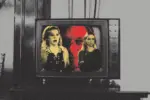From headline stories like Jeffrey Dahmer, the Golden State Killer and David “Son of Sam” Berkowitz to the fictional horrors of Norman Bates, Michael Myers and John Doe, the U.S. has a growing pantheon of serial killers.
Fritz Lang’s 1931 film “M,” debuted the first big screen serial killer in the character of Hans Beckert. Germany’s notorious child-killer quickly became an American sensation with Joesph Losey’s 1951 adaptation. America’s obsession, however, did not begin in the streets of Berlin. It emerged 100 years prior in the slums of London.
Jack the Ripper is a moniker well-known to citizens on both sides of the Atlantic. During his 1888 “Autumn of Terror,” London’s Whitechapel killer brutally mutilated and murdered at least five women, with some putting his victim count as high as 11.
The novelty of serial crimes at the time, coupled with the Ripper never being caught, led to speculation in both media and crime fiction that perhaps the unknown killer was an American who evaded arrest by fleeing to the U.S.
What may have remained a fanciful story to sell newspapers and novels soon became a sickeningly plausible theory when, just a few short years after the Ripper went dormant, America christened its first known serial killer — H.H. Holmes.
Holmes began his career, so to speak, as a serial killer in 1886 after moving to Chicago. He murdered his first victims to commandeer their property, but America’s Ripper quickly set to building his infamous mansion of torture. The “Murder Castle” claimed anywhere from 27 to 200 victims in its passages, trapdoors, kilns and asphyxiation chambers.
Both men inspired portrayals of their crimes in the shows “Ripper Street,” “Whitechapel” and “Murder Castle.” Holmes’ ghost even makes an appearance in the CW’s “Supernatural” and the Ripper is honored with an exhibit at Madame Tussauds.
Being the first publicized serial killers, the Ripper and Holmes were more myths than men. They were folktales, scary stories whispered in the dark. Their fictionalization added an element of entertaining thrill to the terror they inspired — like a boogeyman in the closet or a monster under the bed.
America’s killer obsession began with these men and, like any genuine obsession, its magnitude intensified over time.
In October 1983, the Justice Department released their research on serial murders and FBI Agent Robert Ressler coined the term “serial killers.”
Once named, these willowy figments of the American imagination suddenly became horrifyingly tangible entities. Ghosts of children’s stories metamorphosized overnight into human beings so demented that they willingly violate fundamental laws of nature.
America went into a panic. But far more curious is the fascination that accompanied the hysteria. The public wanted to understand the psyche of society’s most deviant citizens in the hopes of ebbing their fears. Turning on lamps may chase away ghoulish nightmares, but illuminating the minds of serial killers only immortalized them.
A seemingly rational curiosity evolved into a cultural phenomenon spanning generations. With the help of the FBI itself, America’s most feared criminals became romanticized vigilantes reaching celebrity status.
Thomas Harris, creator of the character Hannibal Lecter, worked closely with the FBI while writing his crime novels. Through authors and screenwriters, law enforcement fed information about serial killers to the public. Such collaboration not only created a new American villain, but a new hero as well — the mindhunter.
Television shows like “Criminal Minds” and “Mindhunter” depict the inner workings of the FBI’s Behavioral Analysis Unit, offer a glimpse at the work of mindhunters, or profilers, and effectively draw Americans further into the dark realm of serial killers.
Just a decade after the Justice Department’s report, Hollywood fully capitalized on America’s new interest. The 1992 Oscars was an affair dedicated to “The Silence of the Lambs,” with the film taking home The Big Five Academy Awards and host Billy Crystal emerging dressed as Hannibal Lecter.
“If audiences were inclined to feel guilty about their interest in serial murder,” writes University of Buffalo professor David Schmid, “the mass media reassured them that being fascinated by serial killers was acceptable because … they learned about psychology and law enforcement procedure while also participating vicariously in the apprehension and conviction of these criminals.”
Although offering some educational benefits, media depictions are constantly in danger of fictionalizing fact and romanticizing abhorrence.
During the 1940s and 1950s, for example, Ed Gein plagued Wisconsin with crimes so macabre in nature that he was justifiably dubbed “The Butcher of Plainfield.” But most Americans do not know his story nor, more importantly, the stories of those whose lives he dismantled.
Instead, America’s obsession diverts its focus only to the fan-favorite characters Gein inspired — Norman Bates (“Psycho”) and Buffalo Bill (“The Silence of the Lambs”).
“Exaggerated depictions of serial killers in the mass media have blurred fact and fiction,” warns criminology professor Dr. Scott Bonn. “As a result, real-life killers such as Jeffrey Dahmer and fictional ones like Hannibal ‘The Cannibal’ Lecter have become interchangeable in the minds of many people.”
Blurring the demarcation between fact and fiction is not only disrespectful to victims, but also leads to Americans’ eerie romanticizing of serial killers.
Fans of horror cinema make pilgrimages to Gein’s murder grounds in Plainfield, “The Zodiac Killer” is now a meme mocking Senator Ted Cruz and the story of Bonnie and Clyde is retold as an idyllic “Romeo and Juliet” romance.
John Lee Hancock’s film “The Highwaymen” offers a portrayal of America’s grotesque reaction to Bonnie and Clyde’s killing spree. Although depicting the crimes of these murderous lovers, Hancock refuses to idolize them. Audiences know Bonnie and Clyde only through their crimes and glimpses of their shadows, as Hancock waits until the film’s end to show their faces — lifeless and riddled with bullets.
In a similar way, the American public never really knew Bonnie and Clyde, but nonetheless placed them on a pedestal as Robin Hood figures. They claimed 13 lives and yet were worshipped in life and ardently mourned in death. A frenzied crowd of thousands gathered around the car that held the psychotic duo’s lifeless bodies, desperate to see or touch these fallen gods.
The list of serial killers engrained in American folklore is disturbingly long — Joe “Alligator Man” Ball, Velma Barfield, “The Lonely Hearts Killers,” the “Bloody Benders,” Ted Bundy, Jeffrey Dahmer, John Wayne Gacy “The Killer Clown” and Gary Ray Bowles the “I-95 Killer,” just to name a few.
These are not just serial killers; these are household names. Many whose stories, or the fictionalized accounts of them, are as well-known in Americana as Johnny Appleseed and Paul Bunyan. The average American can probably even name more serial killers than presidents.
Historian Shane McCorristine believes people’s intrigue with grisly serial murders stems from a need to experience death “without falling victim to it.”
Others argue that serial killers are a uniquely American phenomenon, and so its obsession is both predictable and justifiable.
“We have five percent of the world’s population and we have had 67 percent of the world’s documented serial killers,” says Joe Berlinger, director of “The Ted Bundy Tapes.” “I think our fascination with serial killers is not an admiration, but a looking into the mirror of who are we as a people that we would produce this kind of phenomena.”
Serial killings are a very real element of American criminality and, as with any element of society, are represented in entertainment outlets. True crime drama and literature are, in this sense, innocent enough. But subcultures that idolize and commodify crimes of violent killers turn benign curiosity into cancerous obsession.
When tantalizing fascination becomes reverent deification, society must reexamine its interests in the perpetrators of unspeakable evil. Which begs the question: Has America become consumed by its centuries-old killer obsession?
















